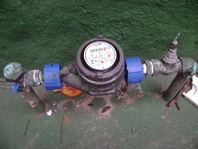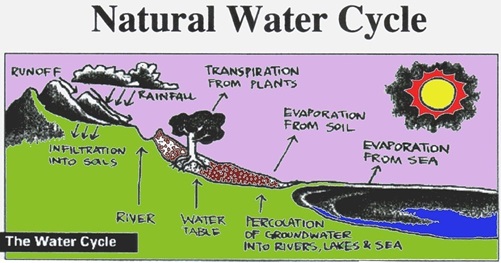Sources of Water
1.How Do We Measure the Water We Receive in Our Houses?
- Water supplied in different localities is measured using a water meter.
- The city area generally receives around 400 to 600 litres of water for each house.
- In the village area, the water supply through pipelines is about 300 to 400 litres.

2.Why Is Ocean Water Salty and Not Suitable for Use?
Water in the ocean is filled with salts and minerals, which makes it salty and unsuitable for use.
3.What Happens to the Rainwater After It Reaches the Land?
- The rainwater gets infiltrated into the soil and gets stored in the aquifers.
- Aquifers are underground storage spaces found in the deep layers of soil.
- Some amount of rainwater gets drained into the rivers and oceans.
4.Does the Total Amount of Water on the Earth Remain Constant?
- Yes, the total amount of water on the Earth remains constant. The water only changes its forms through the water cycle.
- So, when the lakes or ponds dry during the summer, the water converts into water vapour. It helps in the formation of clouds.
- The same water then comes down as rain on the Earth’s surface.

5.What Is the Purpose of Building Tall Water Tanks in Our Surroundings?
The municipal authority pumps the purified water into tall water tanks. These tanks are tall because they can supply water by gravity to a larger area in less time. It is an easy way to supply water.
CBSE Schools In Popular Cities
- CBSE Schools in Bangalore
- CBSE Schools in Mumbai
- CBSE Schools in Pune
- CBSE Schools in Hyderabad
- CBSE Schools in Chennai
- CBSE Schools in Gurgaon
- CBSE Schools in Kolkata
- CBSE Schools in Indore
- CBSE Schools in Sonipat
- CBSE Schools in Delhi
- CBSE Schools in Rohtak
- CBSE Schools in Bhopal
- CBSE Schools in Aurangabad
- CBSE Schools in Jabalpur
- CBSE Schools in Jaipur
- CBSE Schools in Jodhpur
- CBSE Schools in Nagpur
- CBSE Schools in Ahmednagar
- CBSE School In Tumkur











